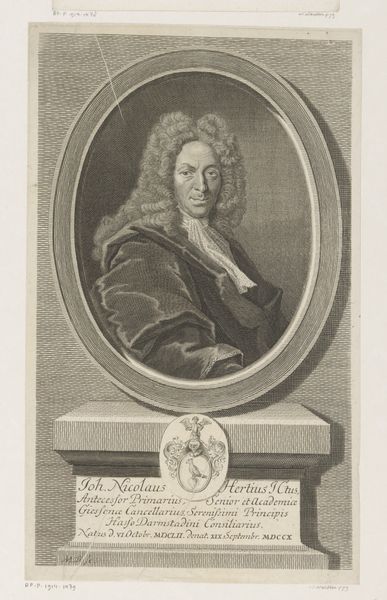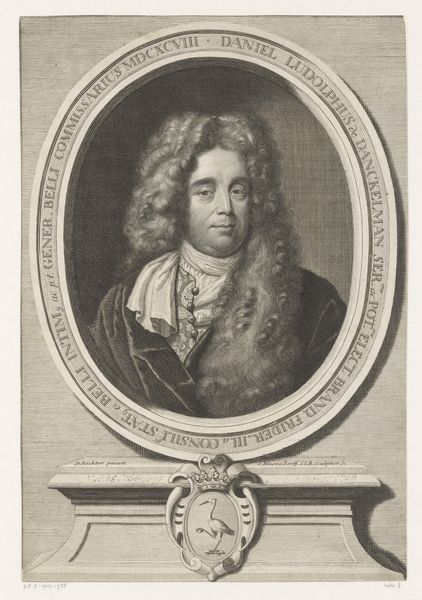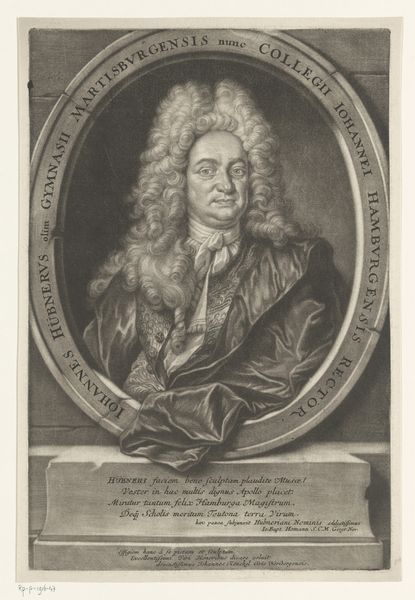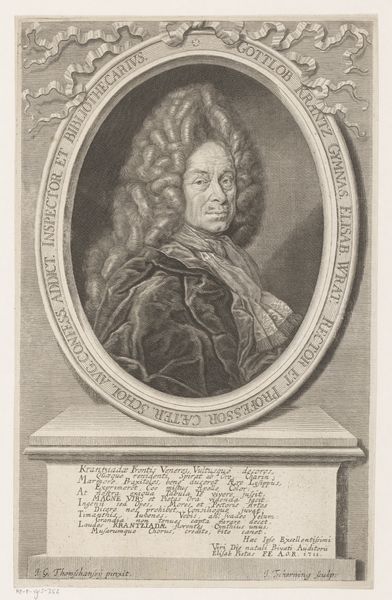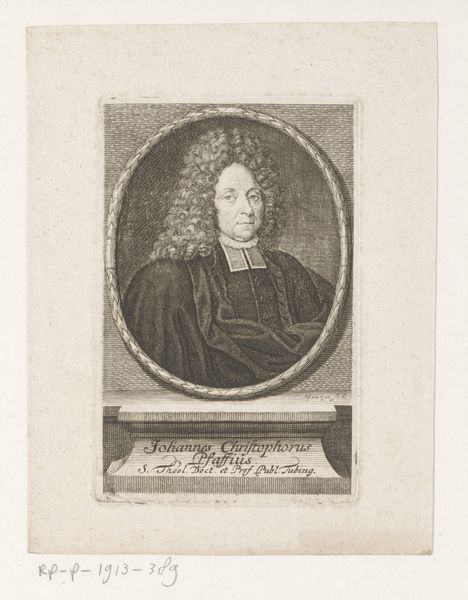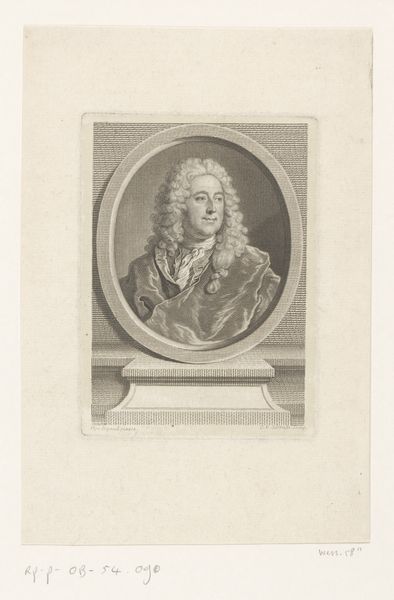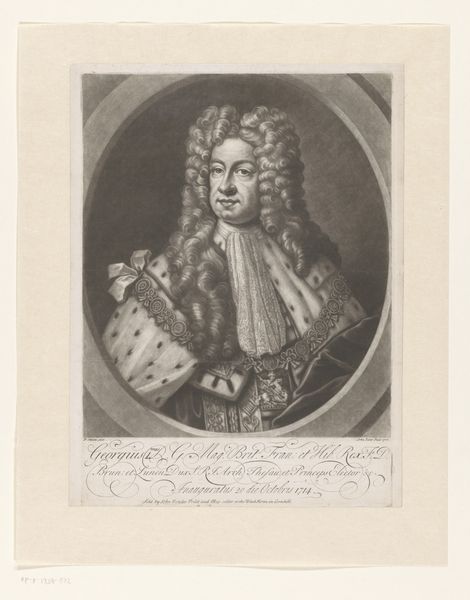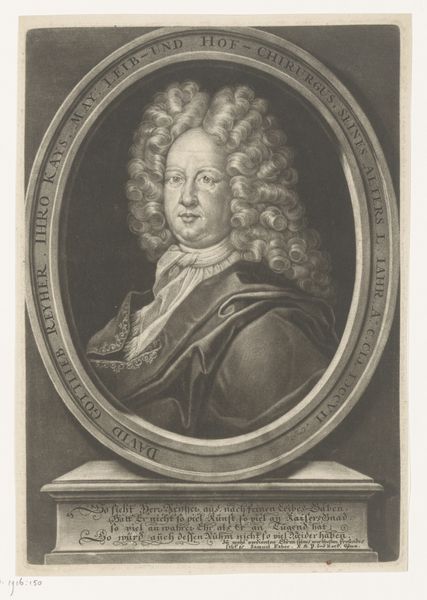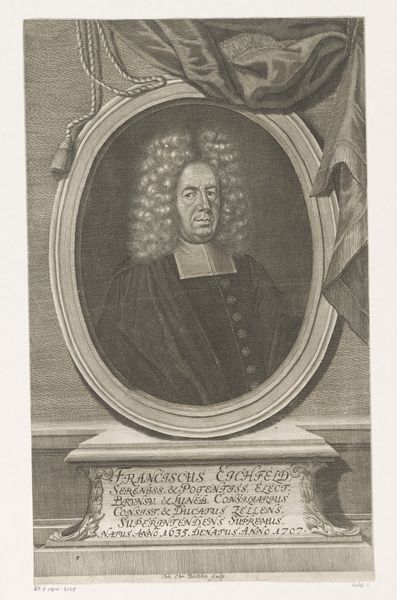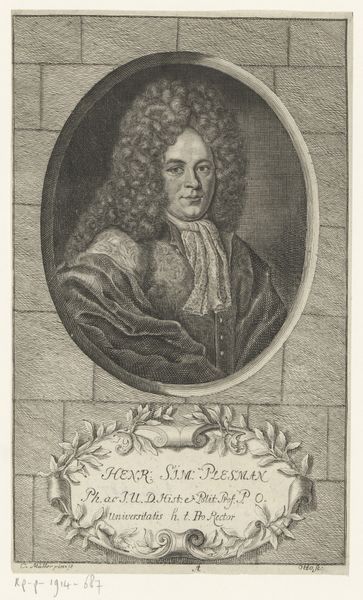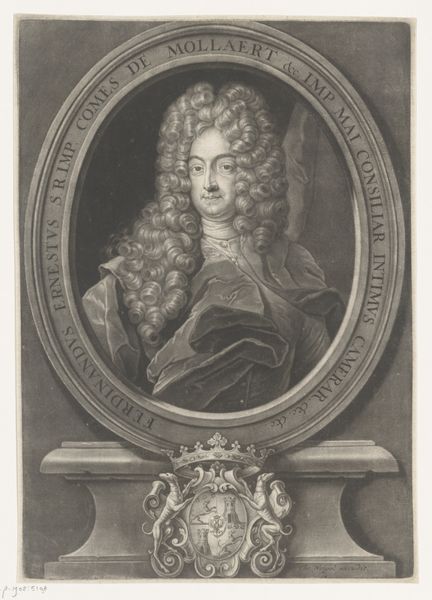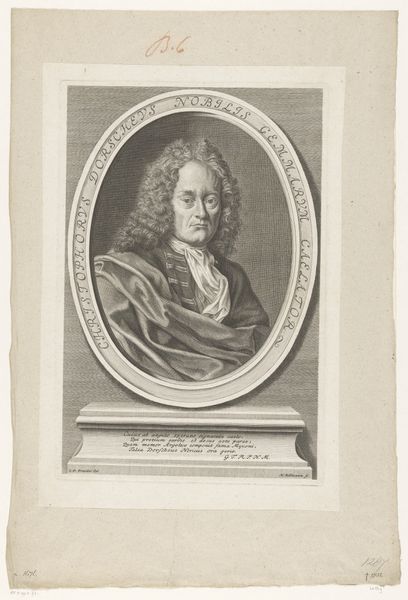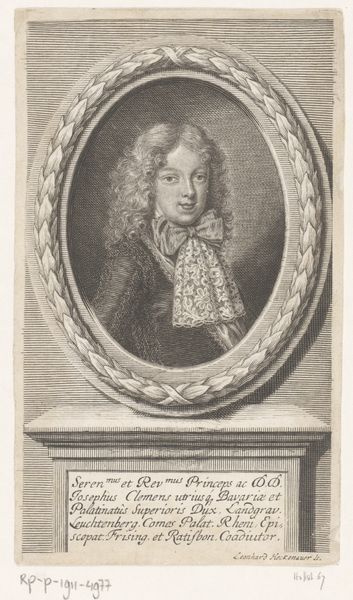
engraving
#
portrait
#
baroque
#
old engraving style
#
history-painting
#
engraving
Dimensions: height 205 mm, width 150 mm
Copyright: Rijks Museum: Open Domain
This is John Faber the Younger’s mezzotint of William Wollaston, a print made after an original painting. The portrait of Wollaston offers a glimpse into the world of 18th-century intellectual elites. As we look at Wollaston, note the trappings of status—the elaborate wig, the draped fabric, and the family crest. These details speak to the social hierarchies of the time, where appearance and lineage played a significant role in defining identity and access to power. Faber, who came from a family of printmakers, was instrumental in popularizing the mezzotint technique in England. This allowed for the wide dissemination of portraiture, thus making images of the gentry accessible to a broader audience. Consider how portraits like these both reflected and reinforced social norms. They upheld a certain image of masculinity tied to class and intellectual standing. Wollaston was, after all, known for advocating reason and moral sense, reflecting the Enlightenment ideals of his time. In looking at this image, we can reflect on the complex ways in which identity is constructed, performed, and immortalized.
Comments
No comments
Be the first to comment and join the conversation on the ultimate creative platform.
